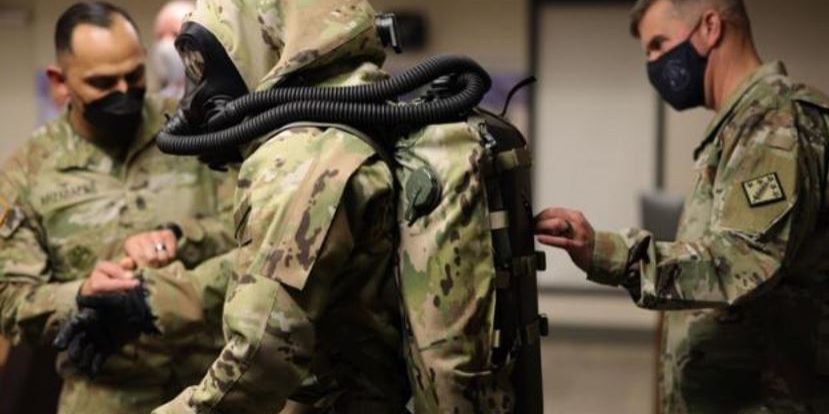Advancements in tactical hazard protection are helping specialists stay on mission longer.
A new system of technologies for chemical and biological (CB) integrated protective gear that increases the time CB incident specialists can spend on the mission also decreases the physical burden of the current Level A ensemble while still providing a high level of protection. The Defense Threat Reduction Agency’s (DTRA’s) Chemical and Biological Technologies Department, in its role as the Joint Science and Technology Office (JSTO) for the Chemical and Biological Defense Program, teamed with researchers at the U.S. Army Combat Capabilities Development Command Chemical Biological Center (DEVCOM CBC) and Soldier Center (DEVCOM SC) and industry partners to develop advanced suit, cooling, and respirator technologies for the protective gear that compose the Tactical All Hazards Ensemble (TacHazE).
CB incident specialists may spend several hours at a time over many days or even weeks in the heavy, cumbersome Level A protective gear consisting of an impermeable suit and a self-contained breathing apparatus that limits user mobility and provides no moisture vapor transfer, which makes it hot. The users also wear oxygen bottles that typically last just one hour.
TacHazE combines new garment materials and respiratory technologies with a personal cooling system. When users face a large amount of toxic chemicals and deadly bacteria and viruses, this new ensemble would improve their mobility, suit temperature, and time on a mission over the Level A ensemble.


